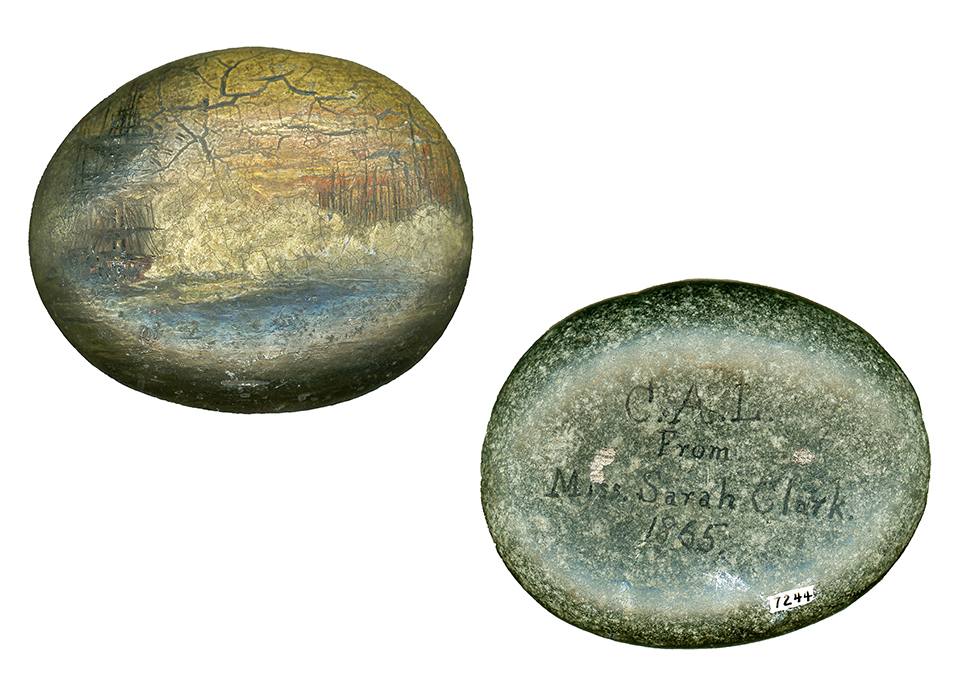 This small smooth rock, about 3 ½” wide by 3” high, has a scene painted on one side showing a large sailing ship surrounded by billowing clouds, or perhaps smoke from a cannonade. The reverse side has an inscription reading:
This small smooth rock, about 3 ½” wide by 3” high, has a scene painted on one side showing a large sailing ship surrounded by billowing clouds, or perhaps smoke from a cannonade. The reverse side has an inscription reading:
C.A.L.
From
Miss Sarah Clark.
1865.
The object raises some questions. What is the painted scene on the front meant to show? Who was Miss Sarah Clark? And why might she have given the rock to Charles Appleton Longfellow (C.A.L.)?
At least a couple of these questions might never be conclusively answered. The scene is so small and possibly darkened with age that there is no clear indication of what is being depicted. All that can be clearly divined is that a large sailing ship, with sails furled, is on the left, and partially obscured by clouds, perhaps a fog at sea, or smoke, maybe from a broadside of cannon fire. Many vertical lines on the image’s right side might represent a fleet of enemy vessels, or other ships at anchor in a harbor.
A likely candidate for the artist is Sarah Clark (1828-1883), the older sister of Longfellow family friend Arthur Hamilton Clark. Arthur Clark grew up in Boston as a Beacon Street neighbor of the Appleton family, and later became a noted sea captain and author of maritime related books. He captained the Alice, a yacht belonging to Charley Longfellow’s uncle Thomas Gold Appleton, on its record-setting transatlantic voyage in 1866, a trip on which Charley accompanied him, and Clark maintained a long relationship with the Longfellows. Unfortunately, little is known about his sister Sarah, but she would likely have known Charley Longfellow and been aware of his interest in all things maritime.
The practice of painting scenes on small smooth rocks appears to have been something of a common hobby at the time and were perhaps given by the artists to family and friends as keepsakes or souvenirs. The Longfellow House museum collection contains one other example (a scene of Venice, Italy) and Thomas Gold Appleton is known to have painted numerous rocks, including images of his yacht Alice and shore scenes from Nahant just north of Boston where he and Henry Wadsworth Longfellow spent many summers.
